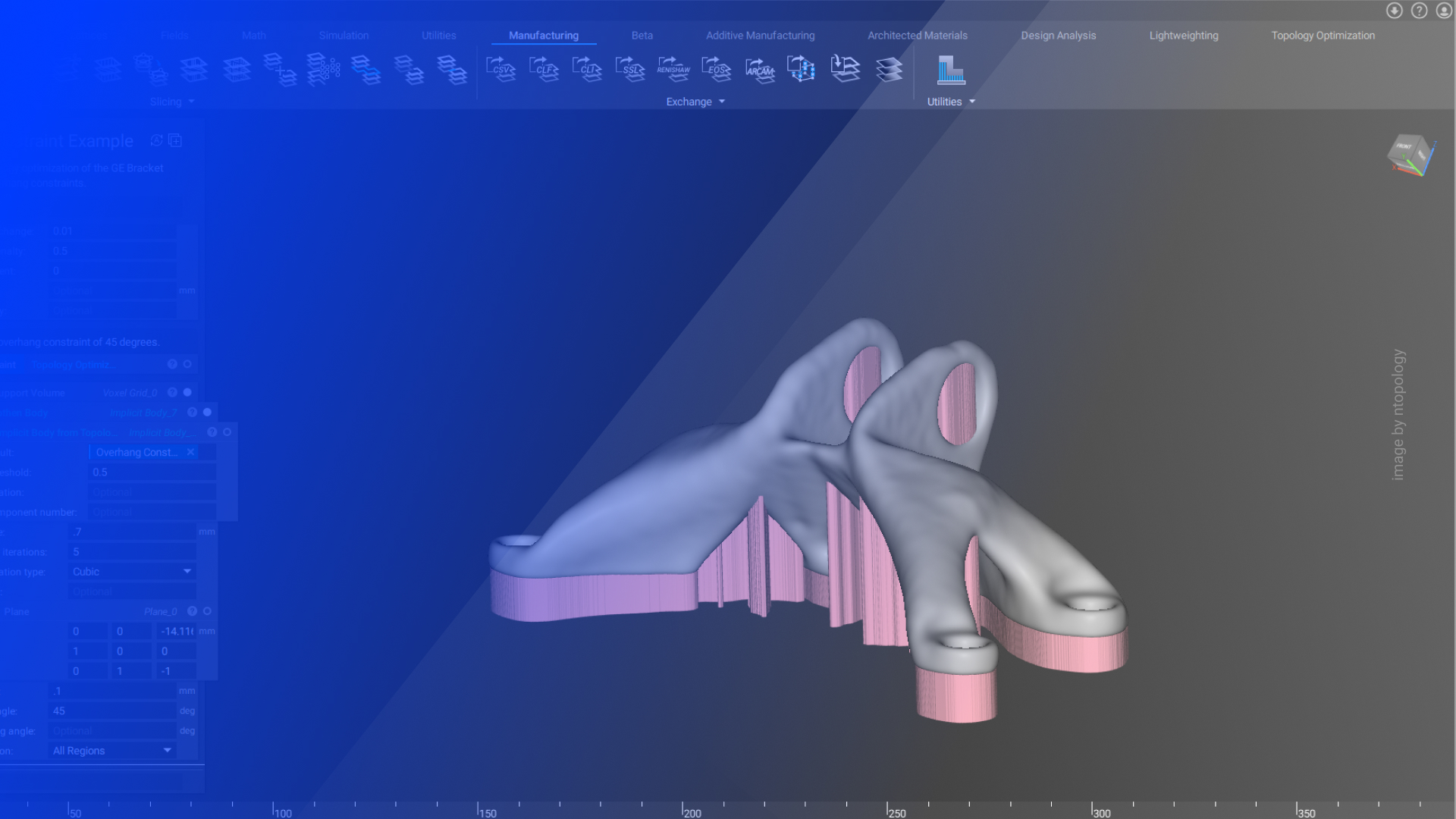Additive manufacturing, also known as 3D printing, is a rapidly growing field that has revolutionized the way products are manufactured. By using a computer-controlled process, parts, and products can be produced layer by layer, making it possible to produce highly complex shapes and geometries. The design of the final product is a critical component of the additive manufacturing process, and it is essential to consider various design strategies and techniques to ensure a successful outcome.
Design for Additive Manufacturing Methods
Design for additive manufacturing (DfAM) methods refer to the design techniques and strategies that are used to optimize products for production using additive manufacturing techniques. In this process, various design strategies are used to reduce material waste, improve part performance, and make the production process more efficient. The engineering design rules of additive manufacturing are an essential component of the DfAM process and help ensure that the final product is of high quality and meets all design requirements.
Additive Manufacturing Processes
There are seven main additive manufacturing processes, including Stereolithography (SLA), Fused Deposition Modeling (FDM), Selective Laser Sintering (SLS), Directed Energy Deposition (DED), Binder Jetting, Material Jetting, and Sheet Lamination. These processes differ in the type of material they use, the way the material is added, and the final result they produce.
It’s important to note that additive manufacturing and 3D printing are not the same things. While 3D printing is a specific type of additive manufacturing, it is a subset of the larger group of additive manufacturing processes.
Designing for Manufacturing
Designing for manufacturing (DfM) refers to the process of designing a product with the end manufacturing process in mind. This process involves four factors to design for manufacturing, including material selection, production processes, design complexity, and design for assembly. The five principles of design for manufacturing are used to guide the design process and ensure that the product can be manufactured efficiently and cost-effectively.
There are four main types of manufacturing methods, including batch production, flow production, job production, and continuous production. The most popular additive manufacturing method is Fused Deposition Modeling (FDM), which is a type of batch production.
Design Strategies
There are three main design strategies used in additive manufacturing, including topology optimization, generative design, and lattice structures. The four elements applied in creating a product design are form, function, aesthetics, and sustainability. The two basic types of design methodologies are form-based design and function-based design.
Engineering Design
Process The engineering design process involves seven steps, including problem definition, concept generation, concept selection, design development, testing and analysis, design optimization, and design implementation. The four engineering design process steps are: empathize, define, ideate, and prototype. There is also an eight-step engineering design process, which includes research, testing, evaluation, and implementation.
Design Principles
Design principles refer to a set of guidelines that help guide the creation of aesthetically pleasing and effective designs. These principles are based on the collective knowledge and experience of designers and are used to ensure that designs are visually appealing, communicate the intended message, and meet the needs of the target audience. The Four C’s of Design (Creativity, Context, Communication, and Collaboration) and the Four Basic Elements of Design (Line, Shape, Texture, and Color) are both important concepts in the field of design.
The Four C’s of Design refer to the key elements that designers must consider when creating a product or service.
- Creativity: Refers to the ability to generate new and innovative ideas and concepts that meet the needs and requirements of the project.
- Context: Refers to the surrounding circumstances or conditions that affect the design, including the intended use, cultural and social factors, and the target audience.
- Communication: Refers to the ability to convey the intended message effectively through the design, including the use of visual and verbal elements.
- Collaboration: Refers to the process of working together with other stakeholders, such as clients, manufacturers, and experts, to achieve a common goal.
The Four Basic Elements of Design refer to the fundamental components used to create visual compositions.
- Line: Refers to the continuous mark made on a surface by a moving point. Lines can vary in length, width, direction, and texture, and can be used to create structure, movement, and emphasis in a design.
- Shape: Refers to the two-dimensional areas defined by lines or borders, and can be geometric or organic. Shapes can be used to create contrast, balance, and hierarchy in a design.
- Texture: Refers to the surface quality or feel of an object, and can be achieved through the use of patterns, materials, and visual elements. Texture can add depth and interest to a design, and can also convey a sense of touch.
- Color: Refers to the hue, saturation, and brightness of an object or surface, and can have a significant impact on the visual appeal and emotional response of a design. Color can be used to create contrast, harmony, and mood in a design.
These elements can be used in combination to create visually appealing and effective designs that communicate the intended message and meet the needs of the target audience. The principles of design, such as balance, contrast, hierarchy, and unity, can also be applied to help guide the creation of effective designs.
Four Ms of Production
The Four M’s in Production Planning are a critical aspect of the production process and are used to ensure the successful and efficient production of a product. The Four M’s are:
- Men: Refers to the people involved in the production process, including workers, managers, supervisors, and support staff. It also includes the skills and experience of these individuals and their ability to carry out the necessary tasks.
- Machines: Refers to the equipment and machinery required to produce the product. This includes machine tools, assembly machines, inspection equipment, and other specialized machinery. It also includes the maintenance and upkeep of these machines to ensure they are in good working order.
- Methods: Refers to the production processes and procedures used to produce the product. This includes the steps involved in the production process, the order in which they are performed, and the methods used to control the quality of the product.
- Materials: Refers to the raw materials, components, and supplies required to produce the product. This includes raw materials, purchased components, packaging materials, and other supplies. It also includes the sourcing, purchasing, and management of these materials to ensure they are available when needed.
By considering the Four M’s in production planning, manufacturers can ensure that the production process is efficient and effective, and that the product is produced to the highest quality standards. This can help to reduce costs, increase productivity, and improve customer satisfaction.
DfAM Tools
One of the popular DfAM (Design for Additive Manufacturing) tools is nTopology. nTopology is a cloud-based design and engineering platform that provides a comprehensive suite of tools for optimizing and automating the design process for additive manufacturing. It helps designers and engineers to quickly create complex, high-performance parts while reducing the time and costs associated with traditional design methods.
nTopology is a software platform used for engineering and design optimization. It provides a range of tools for simulation, analysis, and optimization of products and manufacturing processes. The platform combines generative design, simulation, and high-performance computing to enable engineers and designers to quickly explore and evaluate design options, and make informed decisions about material selection, manufacturing processes, and product performance.
The software offers several features, including topology optimization, generative design, and lattice structures, allowing designers to create products that are optimized for strength, weight, and functionality. It also has a material library that allows designers to select the right material for their product, and a simulation engine that helps designers to evaluate the performance and strength of their designs.
With its user-friendly interface and powerful design tools, nTopology is a popular choice among product designers and engineers who are looking to create high-quality, optimized parts for additive manufacturing. Whether you are designing a new product or optimizing an existing one, nTopology can help you to create products that are optimized for additive manufacturing, reduce costs, and increase productivity.
nTopology Alternatives
There are several alternatives to nTopology for Design for Additive Manufacturing (DfAM) tools. Some of the popular ones include:
- Autodesk Fusion 360: A cloud-based design and engineering platform that provides a comprehensive suite of tools for product design, engineering, and manufacturing.
- SolidWorks: A popular 3D design software that provides tools for 3D modeling, simulation, and documentation.
- ANSYS Discovery Live: A real-time simulation platform that provides interactive simulations for product design and engineering.
- Onshape: A cloud-based CAD software that provides a complete design and collaboration platform for product design and engineering.
- SIMULIA XFlow: A computational fluid dynamics (CFD) simulation software that provides simulation tools for design and engineering.
- 3D Systems Geomagic: A design and engineering software that provides tools for product design, scanning, reverse engineering, and inspection.
These are just a few of the alternatives to nTopology, and each one offers a unique set of tools and features to support the design and engineering process for additive manufacturing. When choosing a DfAM tool, it’s essential to consider your specific needs and requirements to find the best solution for your design process.
Conclusion
In conclusion, the design for additive manufacturing is a crucial aspect of the 3D printing process. Understanding the various design strategies and techniques, such as topology optimization, generative design, and lattice structures, can help ensure a successful outcome. It is essential to consider factors such as material selection, production processes, design complexity, and design for assembly when designing a product for additive manufacturing. Additionally, the engineering design process, including the seven steps and the four C’s of design, should be followed to produce a high-quality product. Finally, the four M’s in production planning – men, machines, methods, and materials – must be considered to ensure a smooth production process. With these principles and strategies in mind, designers can create products that meet all design requirements and are optimized for additive manufacturing.







